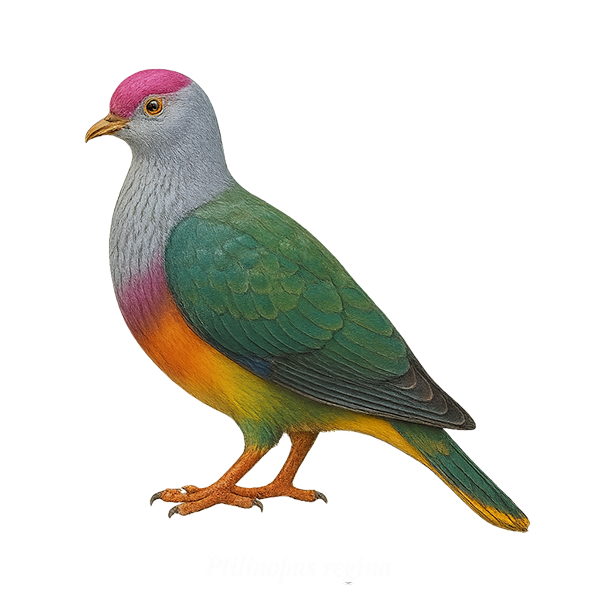Your wildlife photography guide.
Explore the rose-crowned fruit dove in detail, study its behavior, prepare your shots.
Where to observe and photograph the rose-crowned fruit dove in the wild
Learn where and when to spot the rose-crowned fruit dove in the wild, how to identify the species based on distinctive features, and what natural environments it inhabits. The WildlifePhotographer app offers tailored photography tips that reflect the rose-crowned fruit dove’s behavior, helping you capture better wildlife images. Explore the full species profile for key information including description, habitat, active periods, and approach techniques.
Rose-crowned Fruit Dove
Scientific name: Ptilinopus regina

IUCN Status: Least Concern
Family: COLUMBIDAE
Group: Birds
Sensitivity to human approach: Suspicious
Minimum approach distance: 5 m
Courtship display: October to November
Incubation: 16-18 jours
Hatchings: October to December
Habitat:
Tropical forests, mangroves, dense woods
Activity period :
Primarily active during the day, with peak activity in the morning and late afternoon.
Identification and description:
The Rose-crowned Fruit Dove is a colorful and fascinating bird native to the tropical forests of Australia and New Guinea. This medium-sized bird, measuring about 22 cm, is distinguished by its bright green plumage, vivid pink crown, and yellow belly. Males and females are similar, although males often have more vibrant colors. They primarily feed on fruits, playing a crucial role in seed dispersal. Their soft and melodious call resonates through the dense canopy. Although generally discreet, they can be observed in small groups, especially during the breeding season.
Recommended lens:
400 mm – adjust based on distance, desired framing (portrait or habitat), and approach conditions.
Photography tips:
To photograph the Rose-crowned Fruit Dove, focus on tropical forests where it is most active. Use a 400mm lens or longer to capture precise details of its colorful plumage. Be patient and discreet, as this bird can be suspicious. Morning is the best time to photograph it, as it is more active and natural light is ideal. Avoid sudden movements and use a tripod to stabilize your camera.
The WildlifePhotographer App is coming soon!
Be the first to explore the best nature spots, track rutting seasons, log your observations, and observe more wildlife.
Already 1 430 wildlife lovers subscribed worldwide

